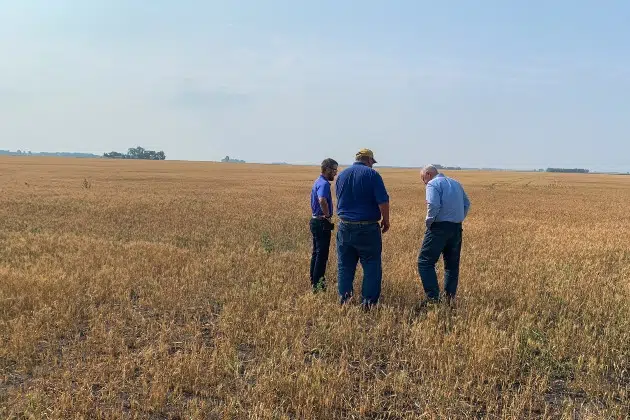(KNSI) – The latest drought monitor shows part of northwestern Minnesota is now in exceptional drought, and nearly half the state is in extreme drought.
According to the U.S. Drought Monitor, 7% of the state is in the highest drought category of exceptional drought. Last week, there wasn’t any part of the state with the highest drought level. Thursday’s report shows 42% of Minnesota is in extreme drought, increasing 7% from last week. Officials say 98% of the state is in some form of drought.
The eastern half of Stearns County and all of Benton, Sherburne, and Meeker County are in the extreme drought category. So, is nearly all of Wright and Morrison County. The rest of central Minnesota is in severe drought.
Minnesota Department of Natural Resources climatologist Kenneth Blumenfeld talked about how often this kind of drought occurs.
“In parts of Northwestern Minnesota, we actually now have exceptional drought, which really corresponds to a very rare level of dryness that you really would only expect every 40 or 50 years. The St. Cloud region is in that extreme level of drought. It’s the third of four categories of drought. It means that we only expected to see this level every 20 years.
Blumenfeld says back in the 1930s; the drought was worse because St. Cloud experienced dry conditions for multiple years in a row.
“And so there was just as widespread, almost continuous drought throughout the 1930s. And that’s when you had some of the shallow lakes running completely empty. And you had people turn on the tap with no water. That was a pretty extraordinary scenario. And I think it will take a while for us to get there.”
Blumenfeld says the last time Minnesota was this dry was during the Reagan administration.
“For us, our most recent really horrible drought was 1988. And that’s not to say there weren’t other bad ones But the one that really stands out, I think you mentioned it earlier, is the 1988 drought in central and southern Minnesota. That was that was kind of a, you know, not maybe a once in a career, if not a once in a lifetime type drought.”
Other recent droughts hit Minnesota in 1976, 1984, 2006, 2007, 2008, and 2012.
Blumenfeld says it would take years of extreme drought to threaten central Minnesota’s drinking water supply.
On Saturday, the St. Cloud area received .27 inches of rain. The Minnesota Department of Natural Resources says the region needs two or three months of above-average rainfall to break the drought. He says a wet fall and decent snowfall over the winter will help refill lakes and streams. St. Cloud could use around 4 to 8 inches of rain over the next two weeks to help the farmer out.
According to the National Weather Service Hydrology Department, the typical depth for the Mississippi River south of the university dam is four to eight feet. Right now, the Mississippi River is at low flow at 3.8 feet deep. Low flow means the river is in the lowest tenth percentile for where it should generally be.
Over the last couple of weeks, St. Cloud, Sartell, Sauk Rapids, and Waite Park all issued watering restrictions or bans.









